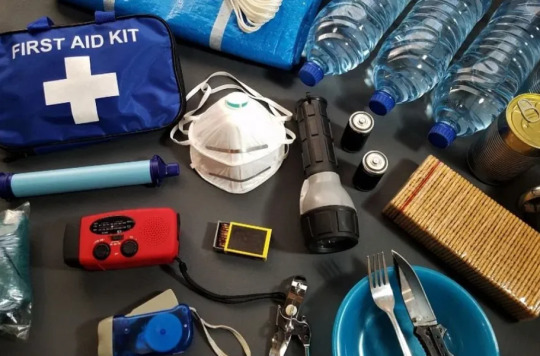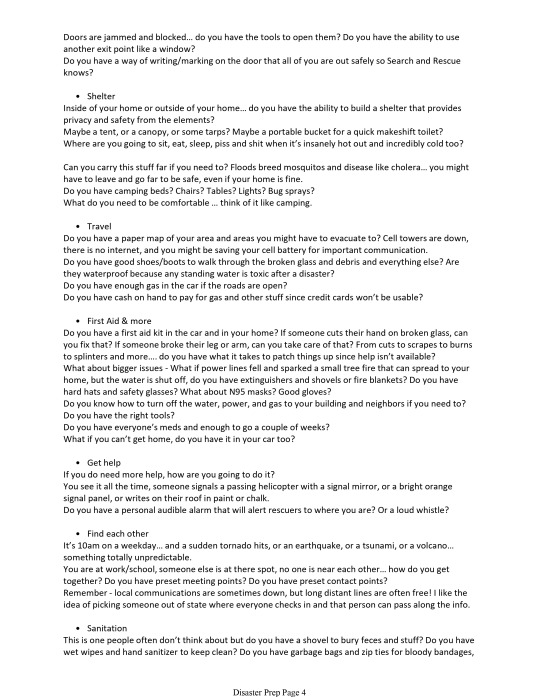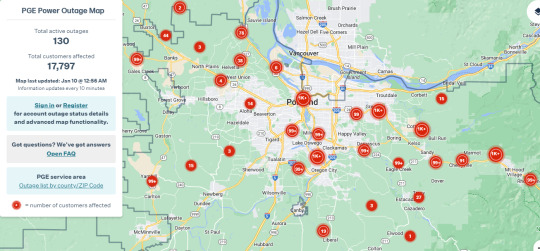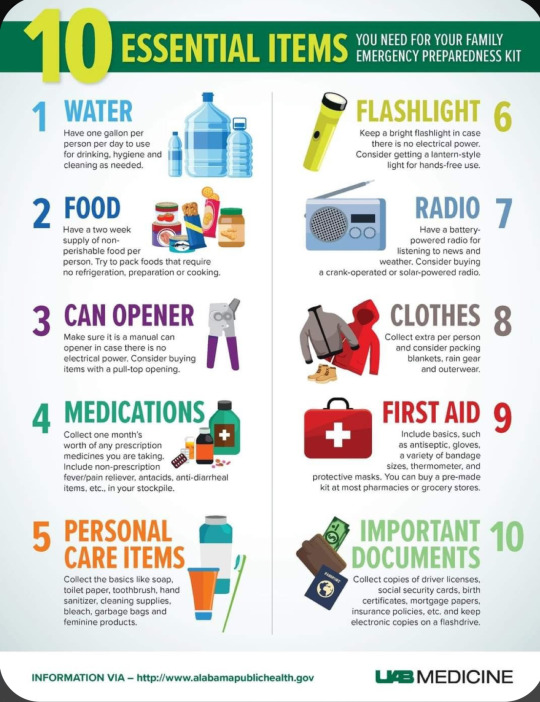#Emergency preparedness
Explore tagged Tumblr posts
Text
LA Evacuation Zone Map: Responding to the Wildfire Crisis

Los Angeles is grappling with a series of devastating wildfires, particularly the Easton Fire near Altadena and the Palisades Fire. These fires, fueled by dry conditions and strong Santa Ana winds, have rapidly spread, destroying homes and prompting large-scale evacuations. Notably, celebrities such as Spencer Pratt and Heidi Montag have lost their homes, drawing national attention to the crisis.
The Easton Fire has destroyed numerous residences, pushing firefighters to prioritize evacuations and containment efforts. Similarly, the Palisades Fire has forced many residents, including high-profile individuals, to flee as the flames consumed luxury homes.
Authorities have issued evacuation orders for several neighborhoods, emphasizing the need for residents to follow updated evacuation zone maps closely. These maps are crucial for public safety, providing real-time information on affected areas and escape routes. As the situation evolves, officials urge the public to stay informed through local news outlets and emergency alerts.
Wildfires remain a persistent threat in California, with climate change exacerbating their frequency and intensity. This year's fire season underscores the importance of preparedness, efficient evacuation protocols, and the resilience of affected communities.
For more comprehensive coverage and updates, refer to the following sources:
KTLA on Easton Fire
Yahoo News on Wildfire Origins
Fox News on Palisades Fire
#LA evacuation zone map#Los Angeles wildfires#Easton Fire#Palisades Fire#wildfire evacuation#California wildfires#emergency preparedness
88 notes
·
View notes
Text

Stopping floods and drought by planting trees
Hwalsal magazine (J43/1954)
#poster#magazine#dprk#environmentalism#emergency preparedness#ecosocialism#korean art#hwalsal magazine
29 notes
·
View notes
Text
The Importance of Preparedness: 10 Essential Items for Your Survival Kit
1. Water and Water Filtration
What to Include:
Water: At least one gallon per person per day for at least three days.
Water Filtration System: Portable water filters or purification tablets to ensure you can make any water source potable.
2. Non-Perishable Food
What to Include:
Canned Goods: Fruits, vegetables, and ready-to-eat meals.
Dry Goods: Rice, pasta, cereals, and protein bars.
Specialty Items: Baby formula, pet food, and items for dietary restrictions.
3. First Aid Kit
What to Include:
Basic Supplies: Bandages, antiseptic wipes, adhesive tape, and scissors.
Medications: Pain relievers, antihistamines, and any prescription medications.
Specialized Tools: Tweezers, a digital thermometer, and a CPR mask.
4. Emergency Lighting and Power
What to Include:
Flashlights and Batteries:��LED flashlights with extra batteries.
Solar-Powered Lights: Solar lanterns and portable solar chargers for electronic devices.
Hand-Crank Radio: A multi-function radio that can receive weather updates and charge your phone.
5. Shelter and Warmth
What to Include:
Emergency Blankets: Thermal blankets or sleeping bags.
Tarp and Duct Tape: For creating makeshift shelters.
Warm Clothing: Hats, gloves, and extra layers of clothing.
6. Personal Hygiene Items
What to Include:
Sanitation Supplies: Wet wipes, hand sanitizer, and biodegradable soap.
Toiletries: Toothbrushes, toothpaste, and feminine hygiene products.
Waste Bags: Plastic bags for disposing of waste safely.
7. Important Documents
What to Include:
Identification: Copies of passports, driver’s licenses, and Social Security cards.
Medical Information: Health insurance cards, medical records, and prescriptions.
Financial Information: Bank account details, credit card information, and insurance policies.
8. Tools and Supplies
Why It’s Essential: Having the right tools can make a significant difference in an emergency, allowing you to perform necessary repairs, signal for help, or navigate your surroundings.
What to Include:
Multi-Tool: A versatile tool that includes pliers, a knife, and screwdrivers.
Whistle: For signaling for help.
Maps and Compass: Local maps and a compass for navigation if GPS is unavailable.
9. Communication Devices
What to Include:
Cell Phone and Charger: An extra charger or power bank.
Two-Way Radios: Battery-powered radios for communication if cell service is down.
Emergency Contact List: A written list of important phone numbers.
10. Personal Protection Equipment
What to Include:
Face Masks: N95 respirators or other protective masks.
Gloves: Durable work gloves for handling debris.
Protective Clothing: Long-sleeved shirts and pants to protect against exposure.

53 notes
·
View notes
Text
Disaster Prep is a full time 24/7/365 day a year thing, because no one should just go out and buy everything all at once, and times and circumstances change!
More importantly, there is no one size fits all way of thinking about your family, your situation, and your needs.
Some people do well with checklists, buy this and they're done. And that's ok! Some people do better with being asked questions and thinking critically about what they have, what they need, and what they'll do if x happens, or y happens. And that's ok too!
So having said that, a bunch of people I know and love have been filling my message boxes with questions asking me to tell them what to do, and so I made this quick little pdf as a starting point, not an ending point. This is the rough draft that I sent out, I've not proof read it, and I've found that days later, I'm still adding some stuff to it, but it's "good enough" for now and so I'll share it with y'all too...
















#preparedness#disaster preparedness#emergency preparedness#emergency#emergencies#disaster#disasters#checklist
13 notes
·
View notes
Text
20 notes
·
View notes
Text

13 notes
·
View notes
Text
Having a bug-out bag came in use yesterday so I thought I’d recirculate the benefits of having one. It’s a pre-packed backpack or travel bag that is ready to go in emergencies.
I first made mine after a different narcissistic roommate made me too afraid to go home after I insulted his ego, to the point where I had my friend guard the house in the front yard so I could run in, grab what I needed to stay overnight somewhere, and leave.
I resolved to never be unprepared again, and am relived to say that while the bag hasn’t been useful for its intended purpose, having it in my car has saved me on beach trips, hurricane evacuations, and other overnight trips where I otherwise forgot something at home.
It sits in the trunk of my car and does take up a fair bit of space, but I’m never lacking for space in my car anyway.
Inside:
Cash
Pens/stationery
Multitool
Separate switchblade
First aid kit
Batteries
Multiple chargers
Flashlight
3 outfits, 2 warm, 1 cold (Florida)
Assorted underclothes
Sweatshirt
Bathing suit
Toiletries
Bath towel
1 closed and 1 open-toed pair of shoes
Hat
Sunscreen
Sandwich/grocery bags
Hair ties/brush/clips
I do have to toss some things every now and then as they degrade in the Florida heat, but most of the toiletries were picked up in the travel aisle for cheap. I keep mine in my car but you don’t have to.
If I could safely keep pet food for my cats with it, I would, but again, the heat.
Stay safe out there!
16 notes
·
View notes
Text

🚨 Stay Alert—The Time to Prepare is Now! 🚨
Every day, the world feels more uncertain. From political tensions to racial divisions, from the migrant crisis to mass shootings, and even rising inflation—these distractions can easily cloud our vision. But now, more than ever, we cannot afford to drop our guard. The time to prepare is NOW.
The Urban Survival Playbook is your ultimate guide to navigating these troubling times. This isn’t just another product—it’s a lifeline for you and your family. As the Black community, we’ve always faced challenges with strength, but being prepared is the next step in protecting our future.
💡 Why You Need This:
• Learn how to safeguard your family in an emergency.
• Gain strategies to handle food shortages, economic crisis, and unrest.
• Build mental resilience in the face of uncertainty.
Don’t let distractions put your family’s safety at risk. Visit our website today to get the Urban Survival Playbook and start preparing for the future. Waiting too long could cost you everything.
🛡️ Be prepared. Be empowered. Be ready.
#melanin#urban survival#emergency preparedness#black preppers#crisisprepping#emergency planning#self-reliance#disaster ready#black tumblr#black excellence
8 notes
·
View notes
Text

Hey so PGE is having lots of outages in the PDX + area.
Charge your phones, find your flashlight/candles/jar of glow in the dark plastic marbles, consolidate your blankets and pillows into a central location, all that good stuff.
#pdx#portland#oregon#weather#power#emergency preparedness#electricity#utilities#pge#portland general electric
27 notes
·
View notes
Text
All of the terrible disaster advice on this website is gonna make me cry
Your "go bag" for a fire shouldn't have canned goods, it should have water, money, any medications, and a copy of your important documents for fuck's sake 🤦
#obviously this is me venting and not an exhaustive list#one day I'll have the energy to address this shit#but UGH#I've been on the receiving end of Red Cross meals - there's nothing wrong with that#and you can live for weeks without food#but your MEDS? Your ID? The proof that the children in your care belong in your care?#losing that can range from traumatic to life ruining or life ending#Forget the fucking canned goods! They suck to carry anyway#though I will recommend having several of the little fold-flat pocket can openers on hand#because people will donate canned goods without a thought as to how to get them open#Also! If you have children (or anyone really) I cannot recommend enough that when you are preparing ahead of time you take a minute to#consider comfort items: a small plushie; one of those tiny pinball mazes; a photo; a pack of gum for the stress eater in your life;#a small container of instant coffee or tea for those who regularly rely on caffeine; a mini coloring book or mad libs#it's not 'necessary' but those tiny portable items can make a huge difference in the ability to handle life#so if you are preparing ahead of time it's worth thinking about#emergency preparedness
4 notes
·
View notes
Text
In light of the recent California fires here's a tip from the child of a disaster preparedness professional: make a go bag.
A "go bag" is a tote bag or backpack filled with essentials kept within easy reach in case you need to evacuate your home. This could be fire, flooding, a tornado, earthquake, prolonged power outage, chemical spill, etc.
My personal go-bag has:
first aid kit
pet first aid kit
bottle of ibuprofen
sewing kit
pocket thermometer
hair ties
brightly colored ribbons or flagging tape
pads and tampons
small wrench
dehydrated washcloth
pens and highlighters
hand sanitizer
travel sized lotion, shampoo, and conditioner bottles
tea bags
emergency candle
lighter or matches
You might also want to add things like a spare phone charger, flashlight/headlamp/glowstick, whistle, water filter, MRE's, a space blanket, or a fire blanket depending on what kind of natural disasters are most common where you live.
Additionally, you should keep all your personal documents (or copies of them) together in a place you can reach easily. You should be able to shove them in your go bag on the way out of your house.
6 notes
·
View notes
Text
Summer Reminder: M44s
From a 2021 twitter thread Summer reminder, since many are heading out into the national parks and federal lands: Be VERY careful with anything that looks like a sprinkler head or trash in the ground – it could easily be an M44 cyanide device. It can kill humans and dogs.Our tax dollars pay for this poison. An M44 device in the ground. It looks like a pink marshmallow on top of a sprinkler…

View On WordPress
7 notes
·
View notes
Text
Why You Don’t Have to Be a “Doomsday Prepper” to Be Prepared
When people think of prepping, the image that often comes to mind is someone stockpiling canned goods, building bunkers, and preparing for a catastrophic event. This stereotype of the "doomsday prepper" has made many dismiss the idea of preparedness altogether, thinking it’s only for the overly cautious or conspiracy theorists. However, being prepared isn’t about fearing the end of the world; it’s about taking practical steps to ensure you and your family can handle everyday emergencies. Here’s why you don’t have to be a doomsday prepper to be prepared.
1. Everyday Emergencies Are More Common Than Disasters
While large-scale disasters like earthquakes or hurricanes make headlines, everyday emergencies are far more common and can be just as disruptive. Think about the last time you experienced a power outage, a severe storm, or even a car breakdown. These situations can happen to anyone, anywhere, and having a plan in place can make all the difference. Preparedness is about being ready for the things that are most likely to happen, not just the worst-case scenarios.
2. Preparedness Is About Practicality, Not Paranoia
The idea of prepping often gets a bad reputation because it’s associated with extreme scenarios. However, practical preparedness is about taking sensible steps to protect your home and family. This could mean having a first-aid kit readily available, keeping a flashlight and extra batteries in the house, or knowing how to shut off your home’s gas supply in an emergency. These are everyday actions that can prevent minor issues from becoming major problems.
3. Basic Preparedness Is Easy and Affordable
One of the misconceptions about preparedness is that it requires a significant investment of time and money. While some people may choose to invest heavily in supplies and equipment, basic preparedness is something anyone can achieve with minimal effort. Start small by putting together an emergency kit with essential items like water, non-perishable food, medications, and important documents. Over time, you can build on this foundation, but even a small amount of preparation can make a big difference in an emergency.
4. Knowledge Is Power
One of the most important aspects of being prepared is having the knowledge to respond to different situations. This doesn’t mean you need to be an expert in survival skills, but learning basic safety measures can go a long way. For example, knowing how to perform CPR, how to use a fire extinguisher, or how to purify water in an emergency can be invaluable. These are skills that anyone can learn and don’t require a doomsday mindset.
5. Preparedness Is About Peace of Mind
Perhaps the most compelling reason to embrace preparedness is the peace of mind it brings. Life is unpredictable, and while we can’t control everything, we can take steps to mitigate risks. Knowing that you have a plan in place for emergencies can reduce anxiety and help you feel more in control. It’s not about living in fear of what might happen, but about being ready for whatever comes your way.
How to Start Your Preparedness Journey
If you’re new to the idea of preparedness, it can be overwhelming to know where to start. Here are a few simple steps to help you begin your journey:
Assess Your Risks: Consider the most likely emergencies you might face based on your location and lifestyle. For example, if you live in an area prone to power outages, focus on preparing for that scenario first.
Build an Emergency Kit: Start with the basics—water, non-perishable food, medications, important documents, and a flashlight. You can expand your kit over time as you identify additional needs.
Create a Family Plan: Talk to your family about what to do in different types of emergencies. Make sure everyone knows where to go, how to communicate, and what to do if they’re separated.
Learn Basic Skills: Take the time to learn a few essential skills like CPR, first aid, and fire safety. These skills are useful in everyday life, not just in emergencies.
Stay Informed: Keep up with news and weather reports so you’re aware of potential threats. Having information early can help you act quickly and effectively.
Conclusion
You don’t have to be a doomsday prepper to be prepared. Preparedness is about practical, everyday actions that can protect you and your loved ones in a variety of situations. By taking a few simple steps, you can gain peace of mind and be ready for whatever life throws your way. Remember, it’s not about fearing the worst—it’s about being ready for the unexpected.
18 notes
·
View notes
Text
Meanwhile in other parts of the US not currently on fire...
Winter Storm Cora - A South Snow, Ice Threat | Weather.com
At a Glance The latest winter storm will spread across the South through Friday night. Accumulating snow and ice will stretch from Texas and Oklahoma to Virginia and North Carolina. Treacherous travel conditions, delays and closures are expected in some areas. Lighter snow from this system will likely impact the Ohio Valley, Great Lakes, mid-Atlantic and Northeast.
2 notes
·
View notes
Text
14 notes
·
View notes
